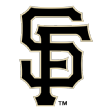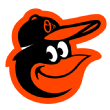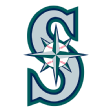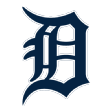In baseball as in life, there are unavoidable problems, things that could not have been foreseen or avoided. The Giants couldn't really do much about Madison Bumgarner's decision to go dirt biking on his off day, nor was there any real way to replace their ace one they lost him. Events like that are mostly out of a team's control, and are the variables that limit a team's chances to guarantee themselves a successful season. Sometimes, stuff just happens.
But not every problem is a bad break. Right now, a number of contenders (or should-have-been contenders) are struggling with headaches of their own making. Let's take a look at the five biggest issues that are causing problems that were both predictable and avoidable.
 1. Third base, Boston Red Sox
1. Third base, Boston Red Sox
Over the winter, Dave Dombrowski decided to not only bet on a return to form from Pablo Sandoval, but also to double down on that bet, trading away the team's potential third baseman of the future (Yoan Moncada -- though to be fair, he helped get them Chris Sale) and useful third baseman of the present in Travis Shaw. Without Shaw and Moncada, the team effectively handed the starting job back to Sandoval, despite the fact he produced two wins below replacement level in 2015, and then missed all of 2016 with a shoulder problem.
The experiment has failed spectacularly, as Sandoval is hitting .212/.269/.354, and his defense at third base is so poor that John Farrell doesn't want to play him when the team starts a left-handed pitcher, because those are games with a lot of grounders to third base. Except the normal Red Sox rotation consists of Rick Porcello and four left-handers, making Sandoval about as poor a fit for this team as any in baseball. All told, the Red Sox third basemen have been some of the worst in baseball, producing nearly a win below replacement level in the first half of the season. The whole point of replacement level is that a team should be able to find someone to perform near that level for minimal cost, but the Red Sox haven't even been able to clear that low bar.
Given that the team still hasn't promoted slugging third base prospect Rafael Devers from Double-A, they don't seem inclined to hand their 20-year-old top prospect the job right now. That makes a July trade most likely, with a midtier acquisition like Todd Frazier as the most likely option. Frazier has regressed a lot the past few years, but he's projected for a little over a win above replacement in the second half of the season, which would be a huge upgrade over what the team has gotten to date.
 2. Left field, San Francisco Giants
2. Left field, San Francisco Giants
While Bumgarner's injury has certainly hurt the team, the Giants wouldn't be winning even with their ace, as their cast of role players has been mostly dreadful this season. No spot on the team has been a bigger problem than left field, where San Francisco's collection of misfits have combined for National League-worst production of minus-0.6 WAR. Of the 13 players to get at least one plate appearance while playing left field in S.F. this year, only two of them have posted above-average batting lines, and one of those is Brandon Belt, the team's regular first baseman. Before rookie Austin Slater showed up to provide some competence, the team had gotten minus-1.1 WAR from its left fielders, which helped sink both the offense and the defense.
The team's decision to head into the year counting on Jarrett Parker and Mac Williamson remains somewhat inexplicable, given the amount spent on adding Mark Melancon to upgrade the bullpen and the big cash outlays spent on Johnny Cueto and Jeff Samardzija to fix the rotation last year. Bullpens are gaining in importance and value around the league, but you can't protect leads you don't have, and if you want to regularly be handing the ball to your closer, having a left fielder is helpful. The Giants are out of it this year, but if Slater struggles in the second half, the team should probably prioritize finding a real left fielder this winter.
 3. Starting pitching, Baltimore Orioles
3. Starting pitching, Baltimore Orioles
Part of the Orioles' starting pitching collapse falls into the "What are you going to do?" category. Kevin Gausman was excellent last year, and looked to be delivering on his promise as a 25-year-old quality starter. His implosion this year isn't something the Orioles could have planned for.
But everything after him? It looked sketchy in March, and it doesn't look any better now. The team entered the year with no rotation depth, forcing it to rely heavily on Chris Tillman (who ended last year on the disabled list with a shoulder problem and wasn't healthy enough to start this season with the team) and Ubaldo Jimenez. That predictably backfired, as those two have combined to allow 105 runs in 127 ⅔ innings pitched. There were no alternatives in place to allow Dylan Bundy to build up his innings in a measured way, and he has fallen apart as the workload has piled up.
Thanks to the existence of the Reds, the Orioles rotation is only second-to-last in most major pitching categories, but the Reds aren't trying to win this year.
With the Orioles' best players coming up on free agency, a lot of expensive older players on the books, and no real farm system to speak of, this was another pivotal year for them. With one of the worst rotations in baseball, though, they're going to need a lot more second-half bullpen magic to pull out another playoff berth.
 4. First base, Seattle Mariners
4. First base, Seattle Mariners
With Robinson Cano, Felix Hernandez and Nelson Cruz as the stars of the team, the Mariners entered the year with an aging core that needed to win sooner than later. Jerry Dipoto made approximately 142 trades over the winter in an effort to make the team more athletic and well-rounded, and in doing so, found some quality role players who have helped keep the team hanging around .500 despite an avalanche of pitching injuries. The one thing the Mariners declined to do this winter was significantly upgrade at first base, instead making a minor trade to bring in Danny Valencia to share the job with rookie Dan Vogelbach.
Vogelbach's defense has long made scouts skeptical he can play anywhere besides DH, and his high-walks/moderate-power offensive profile often doesn't translate well against big league pitchers, who force players to prove they can hit. At FanGraphs, we projected the Mariners to have the fifth-worst first base combination in baseball heading into the season.
In actuality, they've been second worst, with Vogelbach playing himself out of a job early and Valencia being asked to take on a full-time role he's not suited for.
In a winter where the Mariners found $11 million for lefty specialist Marc Rzepczynski, who has thrown just 16 innings in 29 appearances, not bidding more aggressively on players such as Eric Thames or Mitch Moreland -- both of whom are earning comparable salaries to the team's LOOGY -- looks like a big mistake. If they want to upgrade at first for the stretch run, trading for someone like Yonder Alonso will cost them a lot more at the deadline than it would have to simply get a better first baseman over the winter.
 5. Bullpen, Detroit Tigers
5. Bullpen, Detroit Tigers
Death, taxes and a terrible bullpen in Detroit. It is only slightly hyperbolic to say that the Tigers' struggles to find enough good relievers date back to the days of Ben Franklin -- Willie Hernandez excepted. Detroit's bullpen in 2017 is 29th in the majors in ERA, 30th in FIP, 30th in xFIP, and 29th in win probability added, but this isn't new; over the past 10 years, the team ranks 29th in ERA, last in FIP and xFIP, and 24th in WPA. While this era of baseball in Detroit will be remembered for Miguel Cabrera's great hitting and Justin Verlander's dominance as an ace, the team's inability to find a competent group of relievers has been just as prominent.
This year, the team was overly reliant on Francisco Rodriguez, despite his 2016 performance producing a number of red flags, including a big drop in his strikeout rate. Justin Wilson had to take over ninth-inning duties once K-Rod became Walks-And-Homers-Rod and the team simply lacked enough good arms to get him the ball in save situations as the team's inability to find reliable setup men has helped sink its season. With the Tigers looking like sellers at the trade deadline, the time of the Tigers being perennial contenders may be over.
Perhaps during the impending rebuild, the organization can figure out what it's doing wrong when it comes to evaluating relief pitchers.
